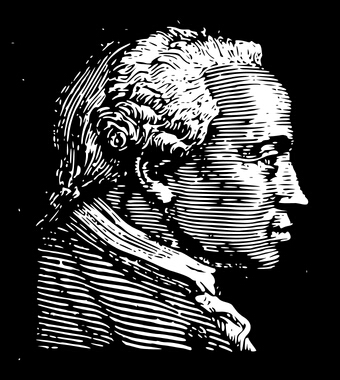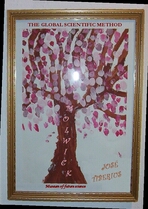1.c Knowledge sources and its characteristics
Humans have an innate tendency for learning.
The commonly categorized popular knowledge is so broad and complex that it uses contextualized expressions to transmit concepts that otherwise would be very complicated or would take too long. Curiosity killed the cat is like the previous paragraph phrase but does not commit to anything.

On the other hand, from the first sentence, one could begin to question its accuracy: Why only humans? Is it innate? Is it instinctive or not? Is it only a tendency, or is it an intrinsic and permanently operative characteristic? Does it come only from the consciousness or also the unconscious? That is how we would proceed until ending, asking what a being is?
More formally, if the origin of human knowledge comes exclusively from experience (empiricism -Locke), or the contrary (innatism -Leibniz), or a past engagement of both (apriorism -Kant)
The effectiveness of widespread knowledge, however, has a great inconvenience due to its characteristics in that it is unreliable and very often ironic because a slight contextual variation can change its meaning. In other cases, it just attempts to cheer up life with humor employing ideas crossing the mind, and at times even deliberately inverting the elements of cause-effect.
In order to avoid this entire series of disadvantages of human knowledge emerges the scientific method that, in its strict version, counts on three basic principles accepted among most of the community. They also tend to note various specific methods according to the subject studied with greater or lesser acceptance, and they usually tend to refer to systems with complex characteristics.
It could be general knowledge is to the scientific method what intuition is to logic in that both have the same sources: perception, intuition, and logic. They share problems related to the contextualized elements and the difficulty of the cause-effect separation.
Furthermore, creativity can be included as a source of knowledge as much popular as scientific. An example of a source of popular knowledge would be the phrase: think the worst and you will not be far wrong, and an illustrative example of the creativity as a source of scientific knowledge would be: the madness of genius.
The scientific method aims for objectivity and certainty in its conclusions, which is why it has few errors. On the contrary, widespread knowledge does indeed make them, but, on occasions, it is much more efficient in transmitting a complex idea; in fact, we all use it regularly.
Regarding characteristics of the sources, logic should not make mistakes either; otherwise, it would no longer be logical and would then be pure speculation.
The intuition does indeed make mistakes since, despite not having the desired certainty of the reasoning, it continues with partial arguments reaching conclusions that it cannot confirm nor deny. Upon freeing itself from the servitude of certainty, its potency is much higher than that of logic.
As it accumulates partial arguments, its margin of error increases and, therefore, its efficiency decreases. However, at times, after long reasoning or thought in which the conclusion curries a raised margin of error, the resulting efficiency increases significantly. Given the conclusion, reliability could increase by other means, and the source of knowledge would move from intuition to be creativity.
It could be the case of the Conditional Evolution of Life in that its philosophical approach is rather adventurous and clashes with the most common beliefs and approaches within society. Its hypotheses of genetic functioning are quite bold, but, eventually, it proposes a way of empirical testing! Moreover, accomplishes it!
Of course, sometimes, the evidence against a position can be overwhelming, and, even so, it persists in following the reasoning with a margin of almost intolerable error. If it eventually manages to discover a way for empirical validation, madness would be the 5th source of knowledge, or what one could consider in a way love, or better said, the madness of love.
Another distinct characteristic of the binomial perception-reality is the connection between scientific theory and reality. The Vienna Circle dealt is extensively about it.
There are three interpretations of the relationships between theory and reality (observation): reductionism, realism, and instrumentalism, or conventionalism.
Reductionism circumscribes the scientific theory to the world of the observable, converting itself into the simplification of watching. Realism allows certain non-observable entities but requires them to be real, that is, that they exist independently from the mind. On its behalf, instrumentalism or conventionalism deems it a useful instrument that allows making predictions.
Sincerely, utilitarianism versus rationality seems more technical than scientific, although they are trendy topics they could last centuries.
